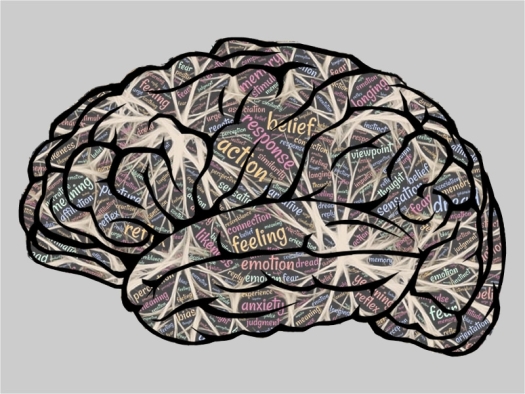BrainOutlineWordle.jpg

Brain outline image by Gordon Johnson; Human experience Wordle by John Hain / Pixabay
Ever feel like your brain is keeping you stuck?
Maybe it’s:
- Anxious thoughts
- Negative self-talk
- Caving to cravings
- Feeling unmotivated
- Trouble concentrating
These are just a few examples of feelings and behaviors that can be hard to break – like an endless cycle – that so often we blame our brains. But here’s what you need to know: You have the power to retrain your brain!
Think of it like rewiring. You can teach the brain to form new connections: to strengthen pathways that serve you and weaken pathways that don’t.
It’s called neuroplasticity.
Neuroplasticity is the reason we’re able to recover function after a stroke, learn new skills, and reprogram our thoughts. It’s the key to behavior change and breaking free from past patterns that keep us feeling stuck. The good news is you have the power to retrain your brain.
Neuroplasticity and Habits
What neuroplasticity has to do with habits…
“We are creatures of habit.”
“Old habits are hard to break.”
“New habits are hard to keep.”
How many of these ideas do you believe?
So much about improving our health requires changing our habits. That’s true for physical, mental, and emotional health. But in order for new habits to stick, we also need to retrain our brains.
It’s called neuroplasticity and is basically like rewiring old patterns into new ones on a subconscious level. Here’s the great thing about neuroplasticity:
- The more you trigger neural pathways in the brain, the stronger they get.
- The less you trigger other neural pathways in the brain, the weaker they get.
That means every time you lace up your walking shoes instead of sitting on the couch, you’re training your brain to believe you’re a person who exercises. Every time you drink water instead of wine, you’re training your brain to believe you’re a person who stays sober. Every time you take a deep breath instead of yelling, you’re training your brain to believe you’re a person who stays present and relaxed.
The key to making neuroplasticity work in your favor is to practice your positive and health-promoting habits in little bits often:
Little and often. That’s how you train your brain, and that’s how you make habits stick.
Five daily neuroplasticity practices
Neuroplasticity is the brain’s ability to respond to a changing environment, reorganize pathways, and improve function. Better neuroplasticity can help with creating fresh habits, learning new skills, releasing unneeded anxiety, and pretty much anything else involving the brain. There are lots of ways to improve neuroplasticity. Depending on your goals, you can choose practices to help reach them.
For example:
- Brain Games: If your goals revolve around improving your focus, concentration, reaction time, and memory, you might try blocking off 15 minutes a day to do something like Sudoku, chess, or a brain-training app.
- Art and Music: If your goals include improving your mood and processing your emotions, you can retrain your brain through creative expression like drawing, painting, or singing.
- Meditation: If your goals include becoming more mindful and present while improving your mood, meditation reinforces neural pathways related to positive emotions.
- Deep Breathing: Whether it’s better concentration, focus, mood, or stress resilience you’re aiming for, deep breathing activates the vagus nerve to tell your nervous system to reset.
- Yoga: Similar to meditation and deep breathing, yoga activates the vagus nerve and sends a message of calm to the nervous system.
Our brains are forever changing. If we make it a habit to do some sort of neuroplasticity training every day (like one of the above) , we program the brain to be resilient, malleable, and strong.
Remember: The key with all neuroplasticity practices is to do them often.
Do you practice any of these things?
What benefits do you notice?
Three more ways to improve neuroplasticity
Once again, neuroplasticity is the brain’s ability to create new connections and strengthen existing neural pathways.
Because of neuroplasticity, we’re able to:
- Release anxieties
- Improve mood
- Respond better to stress
- Break unwanted habits
- Create helpful habits
- Think more clearly
- Stay focused
- Remember more easily
- Learn new skills
Neuroplasticity explains why things like brain games, meditation, and yoga work. But here’s where it really gets fun: everyday healthy habits that we so often recommend in functional medicine ALSO improve the brain’s plasticity – meaning all of your efforts to retrain your brain will work better.
Like this:
- Exercise triggers the release of a chemical called brain-derived neurotrophic factor (BDNF), which improves neuroplasticity.
- Fruits & vegetables are rich in antioxidants called polyphenols that protect nerves to support neuroplasticity.
- Restorative sleep is also a necessary ingredient for neuroplasticity.
The conventional medical paradigm likes to isolate the parts of the body, the treatments, and the outcomes. But in functional medicine, we know all the parts work together. And everything works better when our brains are on board.
Revised by Joanne Quinn, PhD; content provided by Wellnesswriter.com.


